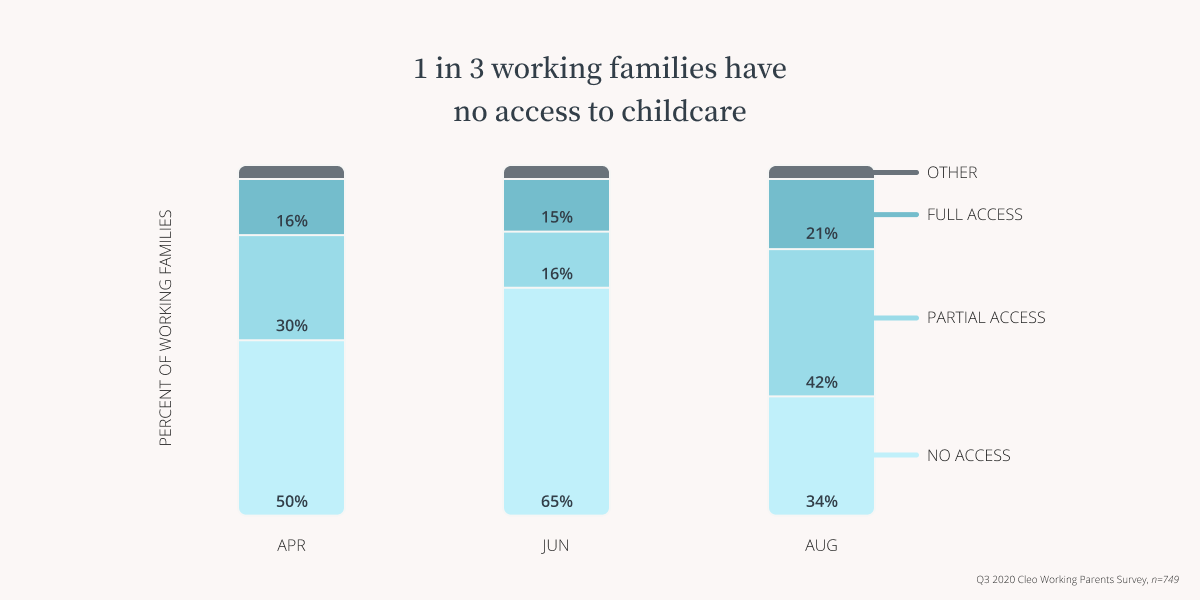Working parents demand unique benefits to meet their diverse needs
While they’re not always viewed as such, parents are a vulnerable group within the employee demographic. While most employers are already offering a catalogue of benefits and resources to these workers, companies haven’t historically had the tools to set them up for success with the right kind of support. Balancing professional and personal responsibilities is notoriously challenging, and working parents face obstacles at every point of the family journey.
As the world and the workplace continue to rapidly evolve, employers have to take stock of the benefits they’re already offering and seriously consider how to improve the landscape for working parents. In the absence of comprehensive support, employees can be left feeling isolated and neglected by their employers, whether they’re navigating fertility challenges or treatment, pregnancy, surrogacy, or adoption, quietly struggling with miscarriages or loss, or re-integrating into office culture following parental leave. Those who are juggling childcare, home-schooling, or any of the other myriad challenges that accompany raising young kids have also been left out of the employee support conversation.
These unjust impediments have always hindered aspiring and current working parents, but—unsurprisingly—the global coronavirus pandemic has amplified these issues and brought them to light. The impact of this unique moment in time is undeniable: according to our Q3 2020 State of Working Parents Study, after six months of sheltering in place, only 21% of working parents reported having complete childcare coverage. As more employees work from home and attempt to balance personal obligations with professional responsibilities, it’s become abundantly clear that employers can no longer turn a blind eye to the hurdles working parents are up against.

Now is the time to take action.
Working parents have a long list of responsibilities, duties, and obligations to balance at work and at home. As work culture is changing and adapting to the state of the world, employers play an important role to help keep these valuable employees healthy, happy, and motivated to achieve their highest potential. When employers don’t address these needs head on, their businesses inevitably feel the effects. There’s a real risk to not proactively designing solutions that support the unique needs of this group—not only now, but in the future, as these inequalities are likely to contribute to many avoidable challenges down the line.
Without the proper tools and resources to navigate the family journey, employers can expect to see difficulty attracting top talent, higher attrition rates, decreased productivity, and the declining physical and mental health of employees. That leaves employers at risk of losing their top talent—after all, many senior-level employees are parents, and research has shown that “highly qualified women with children are leaving careers or off-ramping for a period of time.” The top corporations and leading businesses are already aware of the challenges their family-minded employees face, and they’re motivated to support them in new and innovative ways.

There are three key stages to understanding and addressing the needs of working parents:
- Understanding the full scope of the family building journey—families don’t begin with pregnancy and end when an employee returns to work, so why do so many family benefits? Working families need support as they decide how they want to start a family, explore pregnancy, surrogacy, adoption, or fostering, and for years as they raise children long after their parental leave is over.
- Assessing the business value of supporting working parents—you may not realize how integral parents are to your company. Parents are leaving the workforce at an unprecedented rate because of the challenges balancing work and family obligations. With 40% of working parents being people managers, attrition and absenteeism have a major impact on your business. The right support helps parents stay in their jobs, come to work engaged, and feel more confident at home.
- Designing a benefits program for that supports all employees—not all benefits are always going to work for everyone. That’s why when designing your benefits program it’s essential to pay special attention to how you’re supporting your most vulnerable populations like working parents, LGBTQIA employees, and BIPOC employees. The best benefits programs are equitable and inclusive of all employees.
Now let’s dive into each stage.
Fill out the form below to get the full eBook The changing face of family benefits: An employer guide to inclusive benefits for all families to understand each stage and set your benefits strategy on the right track.
